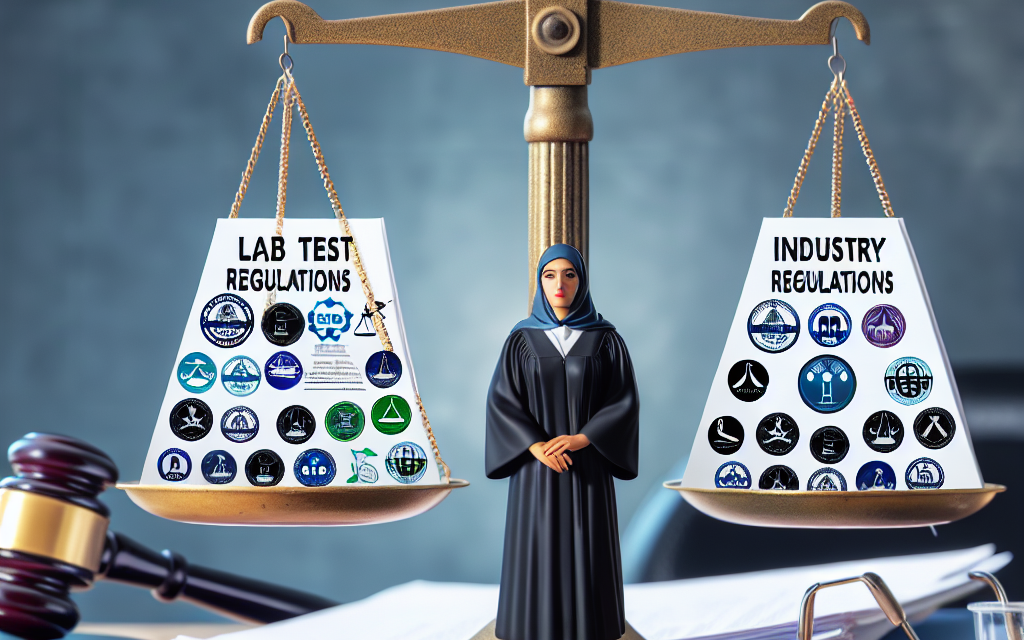Texas Judge Rules Against FDA’s Lab Test Regulations, Supporting Industry Groups
In a landmark decision, a Texas judge has ruled against the Food and Drug Administration’s (FDA) regulations concerning laboratory-developed tests (LDTs), a move that has sent ripples through the healthcare and regulatory communities. This ruling has significant implications for the future of diagnostic testing, the role of the FDA, and the interests of various industry groups. This article delves into the details of the ruling, its implications, and the broader context surrounding lab test regulations.
Understanding Laboratory-Developed Tests (LDTs)
Laboratory-developed tests (LDTs) are diagnostic tests that are designed, manufactured, and used within a single laboratory. Unlike commercial tests that are produced by medical device manufacturers and require FDA approval, LDTs have traditionally operated under a different regulatory framework. This section explores the nature of LDTs, their significance in modern medicine, and the regulatory landscape that governs them.
The Nature of LDTs
LDTs are unique in that they are often tailored to meet specific patient needs, allowing for personalized medicine approaches. They are typically developed in response to clinical needs that are not met by existing commercial tests. For instance, a laboratory may create a test to detect a rare genetic mutation that is not available through standard testing methods.
- Customization: LDTs can be customized for specific populations or conditions, making them invaluable in fields like oncology and rare diseases.
- Rapid Development: Laboratories can develop and implement LDTs more quickly than traditional tests, which is crucial in fast-moving situations like infectious disease outbreaks.
- Cost-Effectiveness: LDTs can often be produced at a lower cost, making them accessible to a broader range of patients.
The Regulatory Landscape
Historically, LDTs have been subject to minimal regulation compared to commercial tests. The FDA has asserted that it has the authority to regulate LDTs under the Federal Food, Drug, and Cosmetic Act, but this has been a contentious issue. The agency’s approach has evolved over the years, particularly in response to the increasing complexity and risk associated with some LDTs.
In 2014, the FDA proposed a framework for regulating LDTs, which would require premarket review and post-market surveillance. However, this proposal faced significant pushback from industry groups, who argued that such regulations would stifle innovation and limit patient access to essential tests.
The Texas Ruling: Key Details and Implications
The recent ruling by a Texas judge has struck down the FDA’s authority to regulate LDTs, siding with industry groups that argued for less stringent oversight. This section examines the details of the ruling, the arguments presented, and the potential consequences for the healthcare landscape.
The Court’s Decision
The Texas judge ruled that the FDA overstepped its authority by attempting to regulate LDTs without explicit congressional approval. The court emphasized that LDTs have historically been regulated by the Clinical Laboratory Improvement Amendments (CLIA), which focus on laboratory quality rather than the tests themselves.
This ruling effectively removes the FDA’s ability to impose premarket review requirements on LDTs, allowing laboratories to develop and market tests without the same level of scrutiny applied to commercial tests. The judge’s decision has been hailed by industry groups as a victory for innovation and patient access.
Arguments from Industry Groups
Industry groups, including the American Clinical Laboratory Association (ACLA) and the Association for Molecular Pathology (AMP), have long argued that the FDA’s proposed regulations would hinder the development of new tests and limit patient access to critical diagnostics. They contend that LDTs are already subject to rigorous quality standards under CLIA, making additional FDA oversight unnecessary.
- Innovation at Risk: Industry advocates argue that stringent regulations could stifle innovation, particularly in fields like genomics and personalized medicine.
- Patient Access: Many patients rely on LDTs for timely diagnoses, and increased regulation could lead to delays in test availability.
- Existing Oversight: Proponents of LDTs argue that the current CLIA framework is sufficient to ensure test quality and safety.
Potential Consequences for Patients and Providers
The ruling has significant implications for patients and healthcare providers. With the FDA’s regulatory authority diminished, laboratories may have more freedom to develop and market LDTs. However, this could also lead to concerns about the quality and reliability of some tests.
Patients may benefit from increased access to innovative tests, particularly in areas where commercial options are limited. However, the lack of FDA oversight could also result in the proliferation of low-quality tests that may not provide accurate or reliable results.
The Broader Context: Regulatory Challenges in Healthcare
The Texas ruling is part of a larger conversation about regulatory challenges in the healthcare sector. As technology advances and new diagnostic methods emerge, regulatory frameworks must adapt to ensure patient safety while fostering innovation. This section explores the broader context of regulatory challenges in healthcare and the balance between oversight and innovation.
The Evolving Landscape of Medical Technology
The rapid advancement of medical technology, particularly in areas like genomics, artificial intelligence, and telemedicine, has outpaced existing regulatory frameworks. As new diagnostic tools and treatments emerge, regulators face the challenge of ensuring safety and efficacy without stifling innovation.
- Genomic Testing: The rise of genomic testing has led to a surge in LDTs, prompting calls for clearer regulatory guidelines.
- Artificial Intelligence: AI-driven diagnostic tools present unique challenges for regulators, as traditional frameworks may not adequately address their complexities.
- Telemedicine: The COVID-19 pandemic accelerated the adoption of telemedicine, raising questions about the regulation of remote diagnostics and treatments.
Balancing Oversight and Innovation
Finding the right balance between regulatory oversight and innovation is crucial for the future of healthcare. While patient safety is paramount, overly stringent regulations can hinder the development of new technologies that could improve patient outcomes.
Regulators must engage with industry stakeholders to develop frameworks that promote innovation while ensuring that tests and treatments meet safety and efficacy standards. Collaborative approaches that involve input from healthcare providers, patients, and industry experts can lead to more effective regulatory solutions.
Case Studies: The Impact of Regulatory Changes on LDTs
To better understand the implications of the Texas ruling and the broader regulatory landscape, it is essential to examine case studies that highlight the impact of regulatory changes on laboratory-developed tests. This section presents several case studies that illustrate the challenges and successes faced by laboratories in navigating the regulatory environment.
Case Study 1: The Rise of Genetic Testing
The field of genetic testing has seen explosive growth in recent years, with many laboratories developing LDTs to detect genetic mutations associated with various diseases. The regulatory landscape for genetic testing has evolved, with the FDA initially proposing to regulate these tests more stringently.
In response to industry pushback, the FDA has taken a more collaborative approach, working with laboratories to establish guidelines that ensure test quality while allowing for innovation. This case study highlights the importance of balancing regulatory oversight with the need for rapid advancements in genetic testing.
Case Study 2: COVID-19 Testing and Emergency Use Authorizations
The COVID-19 pandemic brought unprecedented challenges to the healthcare system, leading to a surge in demand for diagnostic testing. The FDA implemented Emergency Use Authorizations (EUAs) to expedite the approval process for COVID-19 tests, including many LDTs developed by laboratories.
This case study illustrates how regulatory flexibility can facilitate rapid innovation in response to public health emergencies. However, it also raises questions about the long-term implications of such expedited processes on test quality and reliability.
Case Study 3: The Role of CLIA in Ensuring Test Quality
The Clinical Laboratory Improvement Amendments (CLIA) have long served as the primary regulatory framework for laboratory testing in the United States. This case study examines how CLIA has ensured the quality and reliability of LDTs while allowing laboratories the flexibility to innovate.
By focusing on laboratory quality rather than individual tests, CLIA has provided a framework that supports the development of LDTs while maintaining patient safety. This case study underscores the importance of existing regulatory structures in fostering innovation in laboratory testing.
Future Directions: What Lies Ahead for LDTs and Regulatory Frameworks
The Texas ruling has opened the door for significant changes in the regulatory landscape for laboratory-developed tests. As the healthcare industry continues to evolve, it is essential to consider the future directions for LDTs and the regulatory frameworks that govern them. This section explores potential developments and considerations for stakeholders moving forward.
Potential Legislative Changes
In light of the Texas ruling, there may be calls for legislative changes to clarify the regulatory authority over LDTs. Congress could consider enacting laws that explicitly define the roles of the FDA and CLIA in regulating laboratory tests, providing greater clarity for laboratories and industry stakeholders.
Such legislative changes could help establish a more balanced regulatory framework that promotes innovation while ensuring patient safety. Stakeholders will need to engage in discussions with lawmakers to advocate for policies that support the continued development of LDTs.
Increased Collaboration Between Regulators and Industry
The future of LDT regulation may hinge on increased collaboration between regulators and industry stakeholders. By working together, regulators can gain insights into the challenges faced by laboratories while industry groups can better understand the importance of safety and efficacy in testing.
Collaborative efforts could lead to the development of best practices and guidelines that promote innovation while ensuring that tests meet necessary quality standards. This approach could foster a more dynamic regulatory environment that adapts to the changing landscape of healthcare.
Conclusion: Navigating the Future of LDT Regulation
The Texas judge’s ruling against the FDA’s lab test regulations marks a significant turning point in the regulatory landscape for laboratory-developed tests. As the healthcare industry continues to evolve, it is crucial for stakeholders to navigate the complexities of regulation while fostering innovation and ensuring patient safety.
Understanding the nature of LDTs, the implications of the ruling, and the broader context of regulatory challenges will be essential for laboratories, healthcare providers, and policymakers moving forward. By engaging in collaborative discussions and advocating for balanced regulatory frameworks, stakeholders can work together to shape the future of laboratory testing in a way that benefits patients and promotes innovation.
As we look ahead, it is clear that the conversation surrounding LDT regulation will continue to evolve. The need for a regulatory framework that supports innovation while ensuring quality and safety will remain a critical focus for all involved in the healthcare ecosystem.





